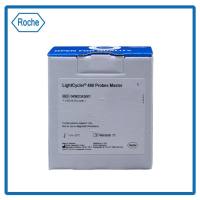The Design and Application of Ribosomal RNA-Targeted, Fluorescent Oligonucleotide Probes for the Identification of Endosymbionts in Protozoa
互联网
404
Species identification in microbiology has long been hampered by the limits of pure culture techniques. This is most evident in cases where morphologically conspicuous microorganisms have so far resisted all attempts of enrichment and cultivation like for many of the numerous endosymbionts of protozoa. Examples are the endonuclear symbionts in ciliates that have been known for more than a century (1 ). Cells of the genus Holospora multiply in the macro- or micronucleus of Paramecium caudatum . The characteristically elongated (infective) cell forms occurring during the developmental cycle are easily visualized by light microscopy. Also certain anaerobic ciliates live in close association with a variety of endo- and ectosymbionts (2 ), many of which were presumably classified as methanogens by the characteristic blue fluorescence of the coenzyme F420 (3 ). This list could be considerably enlarged reflecting the common strategy of the unicellular protozoa to subsidize certain tasks to endosymbiotic microorganisms.









